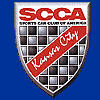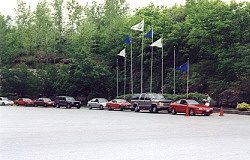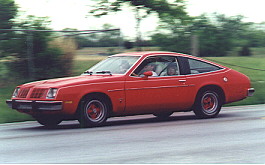


|

What is a "Road Rally"?
 Two or more people, in ordinary cars, on regular roads, within the legal speed limit, make up a rally team. The challenge is to drive on time — not early or late (it's not a race). Each team needs a watch which can be set to match rally time; something to write on and write with. For night rallies it is a good idea to have a map light, flashlight or other interior lighting to be able to read instructions.
Two or more people, in ordinary cars, on regular roads, within the legal speed limit, make up a rally team. The challenge is to drive on time — not early or late (it's not a race). Each team needs a watch which can be set to match rally time; something to write on and write with. For night rallies it is a good idea to have a map light, flashlight or other interior lighting to be able to read instructions.
 Cars start at one minute intervals. The first section of the rally is called the odometer check leg and allows you to compare your mileage to the rallymasters'. If you have a trip odometer in your car you can zero it at the start. You will have a specified amount of time to reach the end of the odometer check leg which is called the Official Mileage Point. Wait there until the given time has elapsed, then leave, following the directions given and travel at the specified speed. Timing controls, or checkpoints, will be found at various locations along the route. After you pass the checkpoint sign and the timing car, stop safely off the road and go back to the timing car to get your time and any other special instructions.
Cars start at one minute intervals. The first section of the rally is called the odometer check leg and allows you to compare your mileage to the rallymasters'. If you have a trip odometer in your car you can zero it at the start. You will have a specified amount of time to reach the end of the odometer check leg which is called the Official Mileage Point. Wait there until the given time has elapsed, then leave, following the directions given and travel at the specified speed. Timing controls, or checkpoints, will be found at various locations along the route. After you pass the checkpoint sign and the timing car, stop safely off the road and go back to the timing car to get your time and any other special instructions.
 Since the Rallymaster knows how fast you were supposed to travel, and how far you went, it is possible to calculate an exact time when you should arrive at the control. The control crew times you with a very accurate clock when you arrive. Your score is the difference between when you should have arrived and when you actually did arrive. Points are given for being early or late. This is a contest of precision, not a race. If you are late at one control, you can not make up for it by being early at the next. The score for each leg is separate. Scores for all legs are totaled and the lowest score wins (just like golf). And, just as in golf, it takes practice to get very good scores.
Since the Rallymaster knows how fast you were supposed to travel, and how far you went, it is possible to calculate an exact time when you should arrive at the control. The control crew times you with a very accurate clock when you arrive. Your score is the difference between when you should have arrived and when you actually did arrive. Points are given for being early or late. This is a contest of precision, not a race. If you are late at one control, you can not make up for it by being early at the next. The score for each leg is separate. Scores for all legs are totaled and the lowest score wins (just like golf). And, just as in golf, it takes practice to get very good scores.
Regardless of whether you get very good scores, or just scores, rallying is a lot of fun if you like to spend time in your car, see some scenery and spend time with congenial people. Rallies usually end at a location where munchies and beverages are available. You can join the rest of the crowd in discussing how the event went and how you did, while waiting for the final scores to be calculated and trophies to be awarded.
The best part about rallying... No Experience Required!
A Tour rally is a time-speed-distance contest with straight-forward course following. There is never an attempt to lead the contestant off course, and typically redundant/confirming instructions are provided if there is an apparent opportunity to get lost. Since there is little challenge in following the course, the competition is either in a "driver's" style event, with challenging roads; or in a navigator's contest of very precise calculations. A typical national tour rally with a minumum of 24 controls is won with less than one point per control average. A "navigator's" contest event may be won with as few as 6-9 points for the entire event.
A Course rally is also a time-speed-distance event, but involves a logic component of determining where the course goes, as well as following the route at the assigned average speed. Here the contest is more mental. If you are a "puzzle" person, then course rallying is for you. Scores are a bit higher as completing the "traps" correctly plays much more of a part in the final results than very precise navigation.
Competition Classes
Equipped: Unlimited equipment
Limited: Any mileage measuring equipment and any calculation equipment without direct odometer or time input, for example, hand-held calculators, notebook computers, etc.
Stock: Stock odometer system and any non-programmable calculation equipment without direct odometer or time input, for example, hand-held calculators
Novice: Any team where the total number of rallies run by the driver and navigator combined does not exceed six (6); equipment limitations same as Stock class